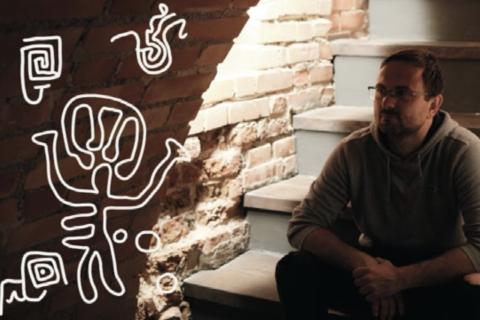A hundred! One hundred years of emotion, togetherness, dance and song, this is how sensitively Kaunas City Museum named the urban exhibition, which, extending through four different locations you will be able to visit from June 28. The exhibition opens in Kaunas on the eve of the Day of Songs Hills Green with Forests. Everything seems to have meaningful names this year. And the 100-year-old Song festival proclaims, “Let the forest stay green,” reminding us that this is not just a slogan but a common goal of all of us.
To fully immerse ourselves in the fiesta of the century, it is important to know the history well. Thus, we discussed the curiosities surrounding the Kaunas song festivals with the exhibition’s authors who have already carried out detailed research. We sat down with its curator and project manager Dr. Aušra Strazdaitė-Ziberkienė and co-curators Irma Grigaitytė and Deimantė Kondrotaitė in the Mikas and Kipras Petrauskas House, which will be one of the stops of the upcoming exhibition. We managed to crystallize a dozen fantastic facts for this text, but after visiting all four exhibition stops you will undoubtedly learn more of them.
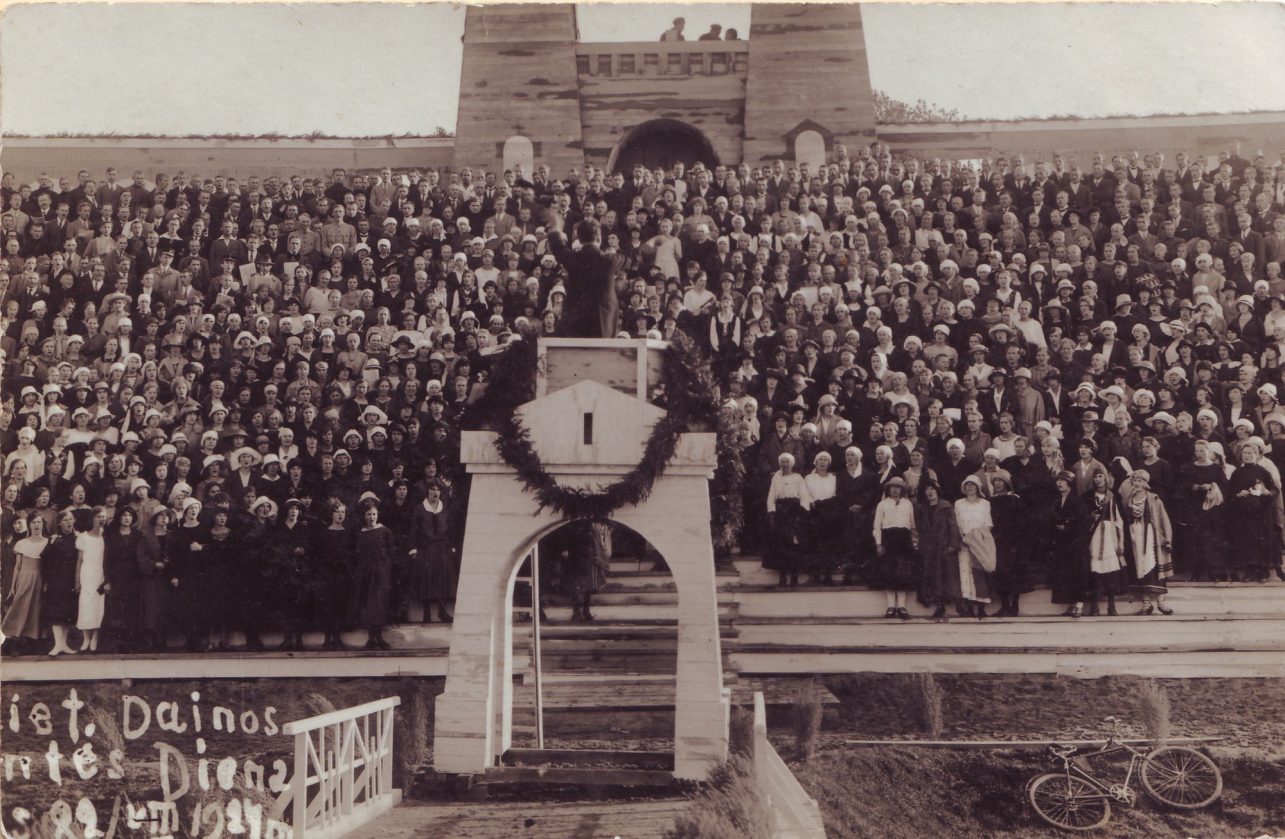
Why 1924?
The first all-Lithuanian song festival (smaller ones were held before) meant the fulfillment of a national ambition; Latvians and Estonians had already started such a tradition earlier and were proud of their many choirs. But why did it happen in that specific year? The answer is encoded in the badge that commemorates the festival: number six formed out of an oak wreath symbolized the six years of independent Lithuania. It was also exactly 20 years since the press ban was lifted. The second festival held in 1928 was devoted to the decade of independence, and in 1930, all attention went to Vytautas the Great.
Where to sing?
No new streets were built in preparation for the first song festival in Kaunas and the Valley of Songs, which today is associated with this tradition, had not yet been built then. The preparations were made in a very short period – just six months. People discussed whether the choirs should gather at the Aleksotas Airport or Oak Park. It was decided to stay at the edge of the Žaliakalnis neighborhood. This square, which was more of a plain field then, served as a place for parades of the Lithuanian army and various organizations, hussar training, and even gliding classes. It was called Hussar Square or the Square of Games and parades, and only in 1926, it was given the name of Petras Vileišis. Now going back to the preparations for the festival, it is important to mention that, in anticipation of the choristers and visitors flooding Kaunas, citizens were asked in the press to weed their surroundings, clean up and decorate their houses and plots with flowers and flags.
Curse of the ponds
Clearly visible in the photographs of the first festival are the two ponds and the bridge connecting them. It was Juozas Naujalis who decided to dig them up for better acoustics. People were jokingly saying that these two artificial water bodies, despite having beautiful plants planted around them, attracted the rain that interrupted the first festival, which continued to follow every celebration after that. But the acoustics were apparently really good. And the first three festivals were decorated with stylized wooden towers: an allusion to ancient castles!
Not everyone showed up
While Estonia and Latvia used to have several thousand choristers a hundred years ago, we were lagging behind: the first all-Lithuanian festival had about three thousand singers. Church choirs made up a large part of the participants, as well as singing communities of ateitininkai (a Catholic organization), riflemen, and various other organizations from towns and cities across Lithuania. There were no specially formed choirs – at least no such data has been found. It is true that the press published calls to register, to add new members to the choirs, who “should have good voices so as not to take up unnecessary space, and also be able to read sheet music.” As well as to pronounce the sounds clearly and not tap their foot to the beat! There were also special courses for choirmasters and exams. It is known that although there were 107 choirs registered half a year before the festival, only 86 remained in the final program. “They failed to do their homework,” the museum employees joked.
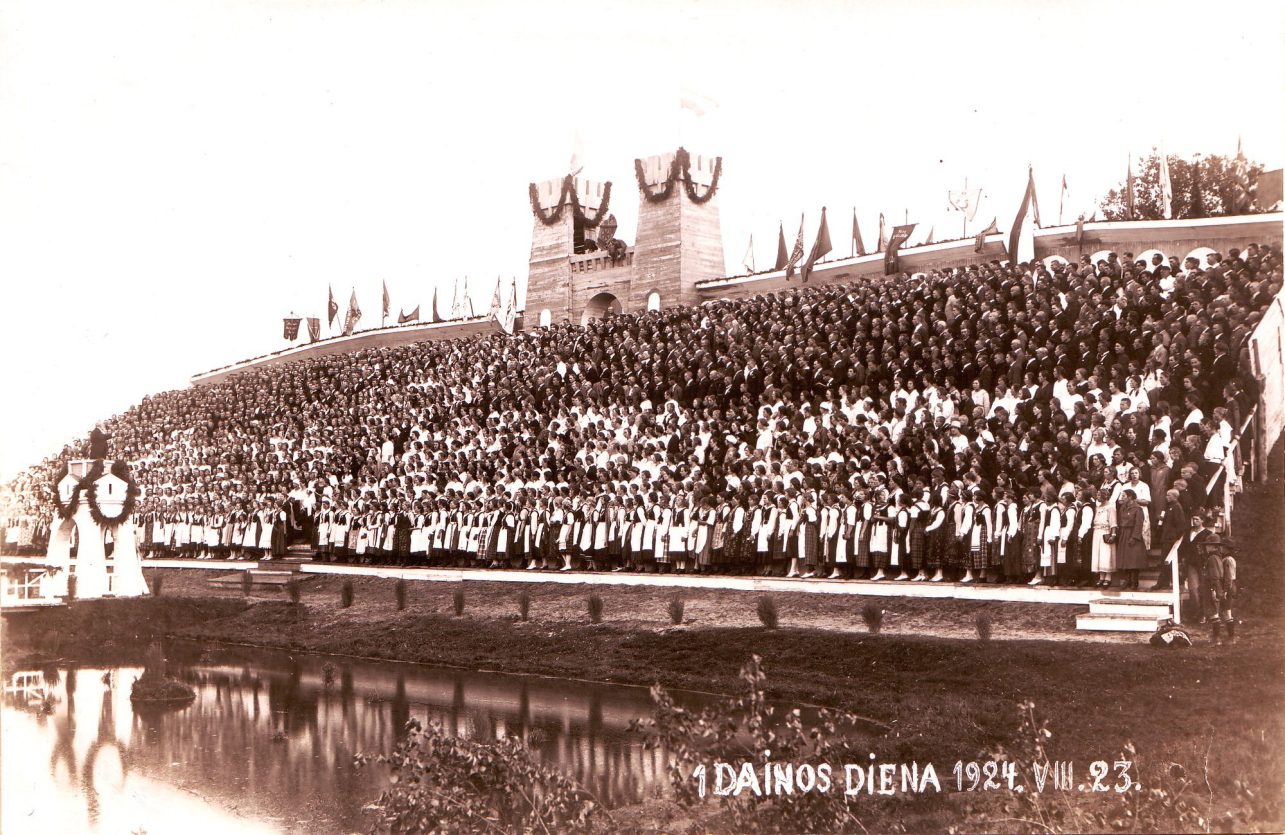
Everyone paid and celebrated
Even choristers were asked to pay a participation fee of one litas. There were 3,000 of them and about 10,000 visitors also bought the tickets. They were standing and seated. People liked it. One journalist wrote that a group of festivalgoers sang outside his window in the middle of the night, “It was almost the same repertoire as the one set for the Day of the Song. They even sang the national anthem and, after that, walked away staggering and holding on to each other.” Of course, the Agricultural fair was also held at the same time, and the press mentions that the participants brought both cured sausage and vodka so, we couldn’t blame it all on Kaunas’s hospitality alone.
Afterparty on hay
Perhaps no song festival is complete without rants about the poor food quality and the hard floor of the school where you have to stay overnight. The organizers laid straw on the floor to make it softer for the choristers a hundred years ago. Therefore, it was strictly forbidden to smoke or burn anything in the lodging places that were established in various facilities including schools (some people also opened their homes). Tea was provided, but you had to bring your own cup and sugar by train, bus, or boat. At the stations, everyone was greeted by special offices, whose staff directed the participants to their lodgings. By the way, during the first song festival, some people also rested in special wagons.
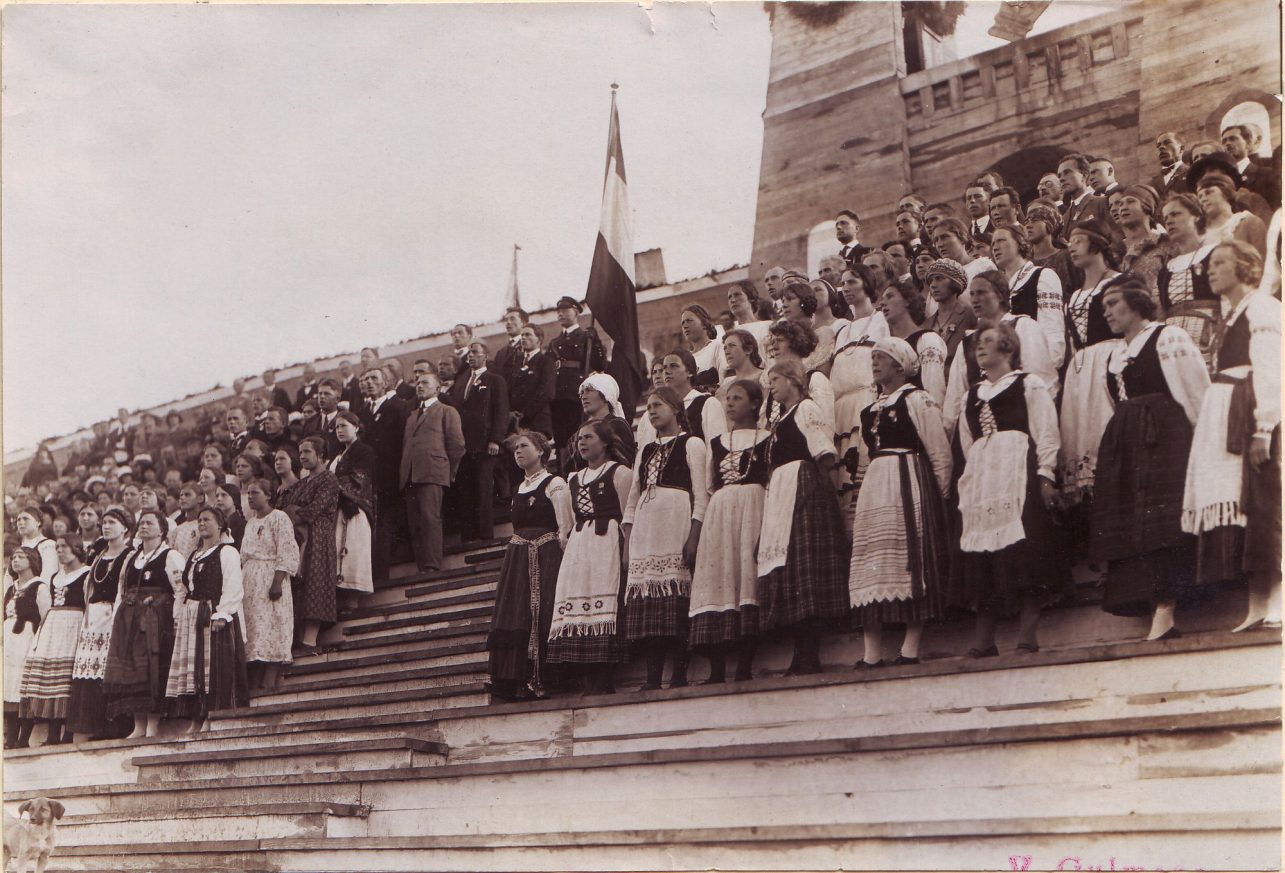
Vaižgantas enjoyed it
The press wrote after the first festival, “In principle, it happened, in principle, it succeeded.” Juozas Tumas-Vaižgantas mentioned the good things in Tautos vairas: tolerable choir leaders, excellent material, good youth… “As long as I have been alive – and I have been alive for a very long time – I have not heard anyone sing the national anthem so perfectly.”
Songs without dancing
The first song festivals focused on singing! True, in 1928 250 schoolchildren performed some gymnastics at the square. And there were separate events for dancing. On June 29, 1937, the first National Dance Festival was held in the same Vileišio Square, where 28 collectives consisting of 8 couples each, took part. They danced three important dances: Kepurinė, Tryptinis, and Kalvelis. “We are happy to know that Kepurinė is not a Soviet heritage,” A. Strazdaitė-Ziberkienė emphasizes. Denying stereotypes and myths about Lithuanian traditions created by the occupiers is one of the tasks of the exhibition curated by her.
Celebrations in Kaunas, thoughts in Vilnius
In the 1940s, the Lithuanian Music Society decided to hold a festival in the reclaimed capital. A stylized badge in the shape of kankles (Lithuanian string instrument) was made, but the plans changed with the start of the occupation. The longed-for, dreamed-of Vilnius, by the way, was present in the symbolism of the second festival. The badge depicted the Tower of Gediminas gilded by sunlight.
Women’s festival
The Women’s Congress Song Festival was held on June 5, 1933! Only women sang in it, conducted by Adelė Nezabitauskaitė-Galaunienė. Not only was she the prima donna of the State Theatre but also the first female conductor in Lithuania. The day of women’s choirs, where works by male composers were performed, was a novelty in the Baltic countries. The congress was organized by the Lithuanian Catholic Women’s Organization.
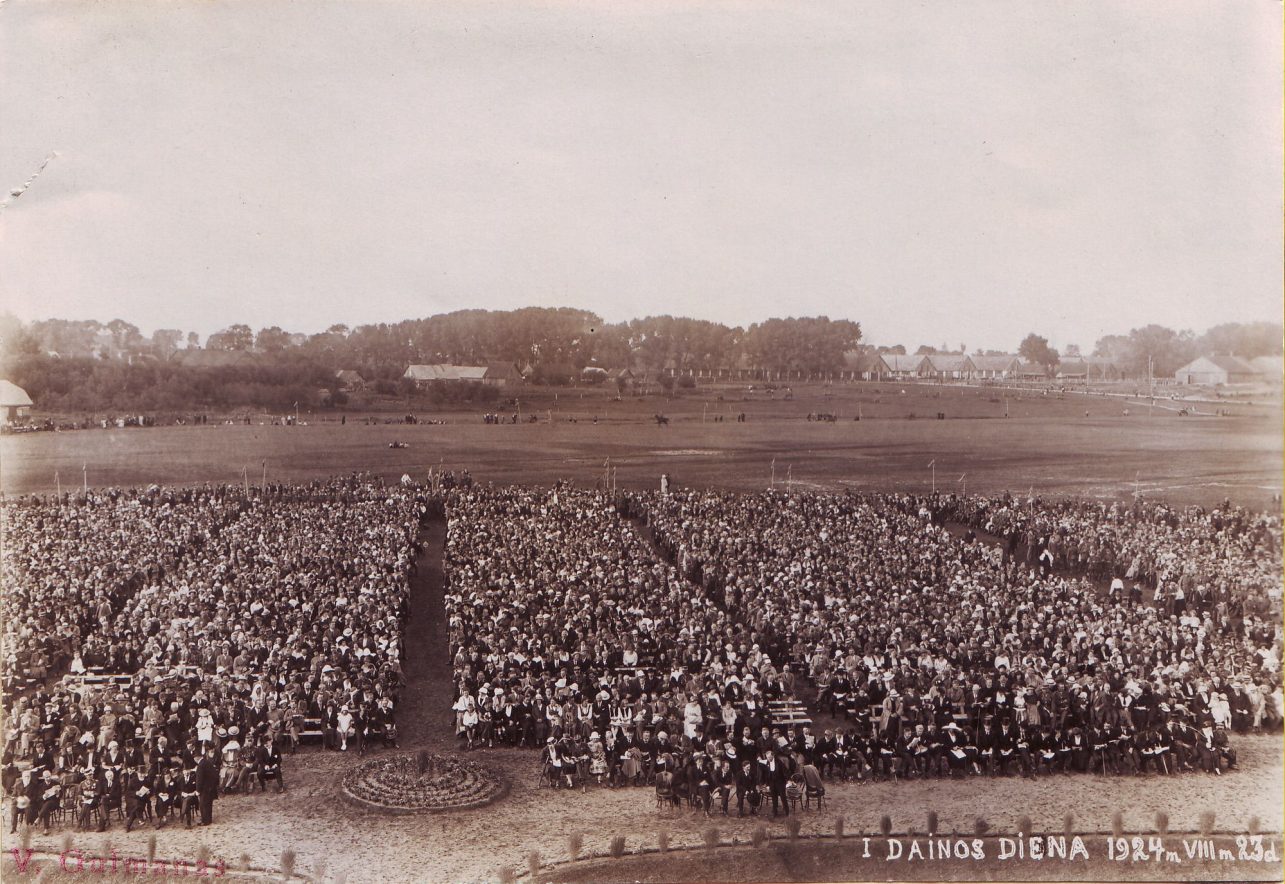
“Lietuva brangi” sung in the presence of the occupiers
During the years of occupation, celebrations in Kaunas became like a rehearsal before the great flight of all of Lithuania to the capital. The repertoire of the main festivals was heavily ideologized, while in Kaunas the atmosphere was freer, the festivals were smaller, and thus less supervised. In 1969 the festival was dedicated to the centenary of Juozas Naujalis. In addition to other works by this composer and harmonized folk songs, the choirs sang “Lietuva brangi” (dear Lithuania), which made many in the crowd stand up… after all, this is what people did in the privacy of their own homes. Indeed, where else but in Kaunas?
Kaunas Sports Hall also served as a stop
After the war, song festivals in Kaunas were squeezed into the Kaunas Sports Hall. Back then it was relevantly new and comfortable. Only around 1955, the songs moved into the open air, not that far away, to the Valley of Songs. That is where the first evening of the centenary celebration will take place. Near the Sports Hall and in the Valley of Songs, you will find the stands of the One Hundred Years of Emotions, Togetherness, Dance and Songs exhibition sponsored by the Lithuanian Council for Culture. Of course, they will also appear in Vileišio Square and the Mikas and Kipras Petrauskas House. The stands are designed for the whole family: while parents read, the children will be lured into a fun game. This will last for the whole year – until June 2025.

